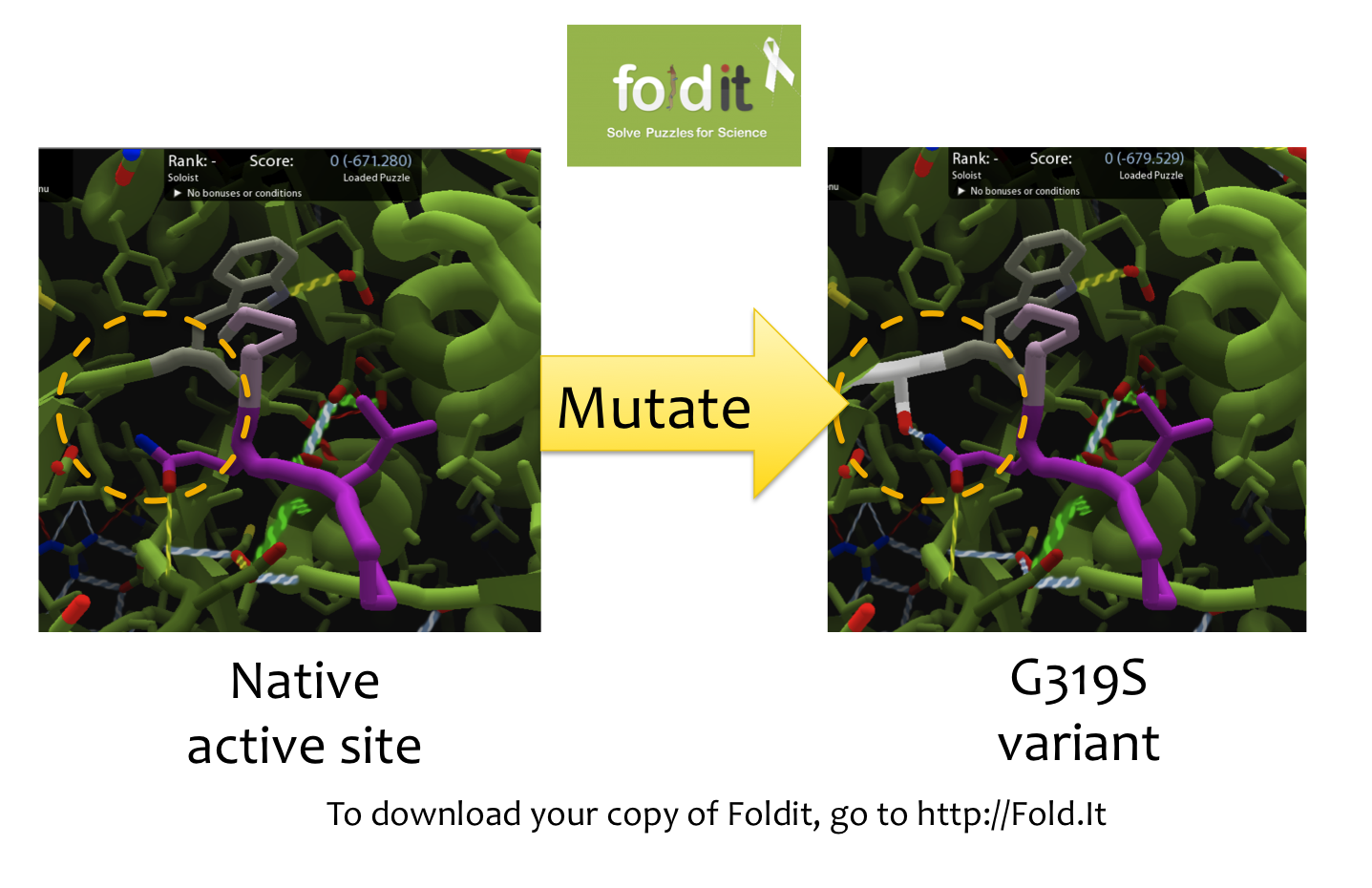Team:Washington/Celiacs/Methods
From 2011.igem.org
Redesigning Kumamolisin to Have Higher Activity at Low pH
Using Foldit to Design Mutations
In order to design mutations to wild-type Kumamolisin that would increase the enzyme’s proteolytic activity on gluten, we used a computational enzyme editing program called Foldit, which allows the user to hypothetically modify the amino acid sequence of a protein by creating point mutations at any location within the protein’s crystal structure.
Within Foldit, we loaded Kumamolisin’s crystal structure in complex with a model PQLP peptide that recurs frequently in gluten, thus mimicking gluten as a substrate. We then modified the amino acid residues around the active site of Kumamolisin in the crystal structure, attempting to decrease the free energy of, and thus stabilize, the system. Estimations of free energy were based on algorithms run by Foldit.
Using this method, we designed over 100 novel mutants, each of which could potentially increase Kumamolisin’s proteolytic activity on gluten.
Mutagenizing Kumamolisin
Kunkel mutagenesis is a classic procedure for incorporating targeted mutations into a piece of DNA, so it was ideal for changing our wild-type Kumamolisin gene to code instead for specifically designed variant enzymes.
Producing ssDNA
The first step to producing our specially designed enzymes was to change the wild-type gene that codes for Kumamolisin to code instead for variant enzymes with our desired amino acid substitutions.
We designed mutagenic oligonucleotide primers that would anneal to the wild-type Kumamolisin gene and incorporate point mutations that, when expressed, would result in a variant of Kumamolisin with the desired amino acid shift. We:
- isolated the single stranded DNA (ssDNA) of the sense strand of our gene,
- harvested the ssDNA of the sense strand by infecting the cells with a bacteriophage that packages its own ssDNA genome, identified by length, and so in tandem also packaged our vector in single stranded form, and finally,
- harvested the phage from the lysed culture of E. coli, and isolated our single stranded vector DNA.
Kunkel Mutagenesis
We annealed and extended our mutagenic oligos to allow for specific binding to our template. This vector was transformed into E. coli that degraded Uracil-containing DNA and replaced them with sections complementary to the opposite strand that contain thymine. Thus, the native Kumamolisin strand that still contained the U’s from the UNG-/DUT- strain was degraded, and the new cells incorporated our desired mutation when synthesizing new DNA from the variant strand.
Using a Whole Cell Lysate Assay to Test Activity of Mutants
Repeated growth, incubation, and induction of cells, followed by lysation, allowed us to test the supernatant for proteolytic activity towards PQLP in an assay which measured PQLP degradation. The assay was done at pH 4 in accordance with the assays done to test ScPEP according to the literature. The mutants were tested against wild-type kumamolisin and ScPEP, an enzyme currently used for the treatment of gluten intolerance via proteolysis. The assay we used was not highly accurate in terms of actual activity. However, what the assay allowed us to do was determine activity relative to our controls. This allowed us to determine which mutants were worth purifying to get more accurate activity data. File:Washington Assay.png
Testing Purified Mutants to Accurately Assess Activity
Purification
After compiling a set of mutants which showed a relative increase in activity we proceeded to purify our mutant proteins. This step is crucial because it allows us to determine how our mutant compares with the wild-type on a quantitative level, as high activity without purification could simply be the result of high protein concentration. Growth, induction, and lysation of single colonies allowed the enzymes to be released from the cells, followed by collection of the purified proteins.
Assay
Concentrations were taken of the purified proteins, and diluted to the same concentration, to produce an assay resulting in accurate data representing which mutants had higher activity than kumamolisin and by how much their activity was greater.
 "
"




